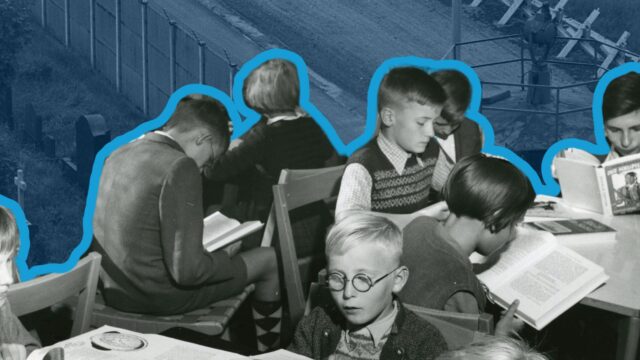The Rise and Fall of the Berlin Wall
This is the history of the Berlin Wall told through the voices of U.S. diplomats, featuring artifacts from the National Museum of American Diplomacy’s collection.
Also available in Deutsch

In post-WWII Germany, the United States promoted democratic ideals via cultural diplomacy with Amerika Haus. From libraries to showing movies, the Amerika Haus locations created opportunities for Germans to experience U.S. culture and ideals after years of Nazi rule.
As political tensions between the United States and the Soviet Union rose during the Cold War, U.S. diplomats continued to work to build cultural bridges between people and countries. Amerika Haus locations became important cultural institutions throughout Germany before the wall was built.
When the Berlin Wall went up in 1961, this posed a significant challenge to cultural and diplomatic exchanges for U.S. diplomats. With East and West Germany now divided, diplomats had to not only continue to run the Amerika Haus in West Berlin, but come up with ways to communicate with people in East Berlin.
In this lesson, students will create their own cultural diplomatic plans to reach people on the other side of the Berlin Wall. By the end of the lesson, students will appreciate the complexities of diplomatic efforts in divided Germany and recognize the importance of cultural diplomacy in overcoming political barriers.